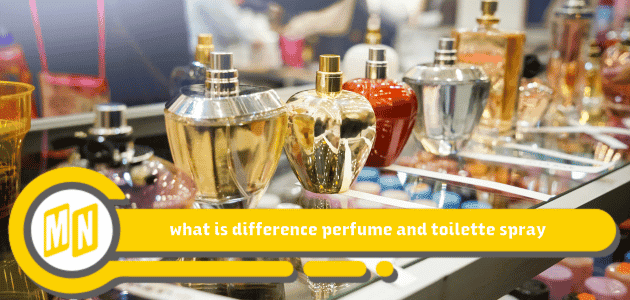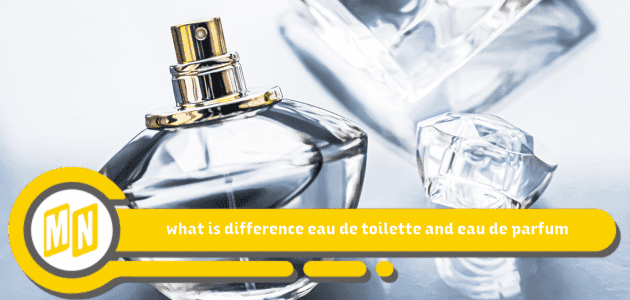what is difference perfume and toilette spray, When it comes to selecting a fragrance, many often feel overwhelmed by the myriad of choices available on the market. Two common terms you’ll encounter are “perfume” and “toilette spray.” While these names might sound somewhat similar, they signify distinct products that offer different experiences. Understanding the nuances between perfume and toilette spray is crucial for making an informed choice that best suits your personal preferences and lifestyle needs.
This comprehensive guide will walk you through the basics of each, explaining their composition, concentration levels, longevity, and ideal occasions for use. By the end of this article, you’ll have a clearer understanding of what sets perfumes apart from toilette sprays, making your next fragrance purchase a breeze. Let’s dive in and explore the world of scents, starting with the fundamental differences between these two popular fragrance forms.
Contents
- 1 What are perfumes and toilet sprays?
- 2 Understanding the Basics: Perfumes vs. Toilet Spray
- 3 Concentration levels: the main difference
- 4 Longevity and sillage: how do they compare
- 5 Fragrance Strength: Which lasts longer?
- 6 Spreads: What to expect
- 7 Occasion and Use: When to wear each
- 8 Packaging and Presentation: Perfume vs Toilet Spray
What are perfumes and toilet sprays?
Perfumes and toilet sprays are two types of fragrances that, while similar, serve different purposes and offer unique experiences. Perfumes are typically a more concentrated form of fragrance, containing higher levels of aromatic oils mixed with alcohol. These concentrated oils result in longer-lasting scents that evolve over time, providing a rich, multi-layered olfactory experience. Perfumes often come in smaller bottles and are applied in minimal amounts due to their potency.
On the other hand, toilet sprays, commonly known as eau de toilette, have a lighter concentration of aromatic oils—usually between 8% and 12%. This results in a fresher, more immediately noticeable fragrance that doesn’t last quite as long as perfume but is perfect for everyday use. Toilet sprays typically come in larger bottles and can be generously applied, making them a versatile choice for various occasions. Understanding these differences can help you choose the right type of fragrance for your needs, whether you’re looking for something long-lasting and luxurious or light and refreshing.
Understanding the Basics: Perfumes vs. Toilet Spray
When it comes to selecting a fragrance, understanding the basics of perfumes versus toilet spray is crucial. At the heart of these differences lies their concentration and purpose. Perfumes, known for their dense aromatic oils, offer a deep, long-lasting scent that can linger on your skin for hours. This makes them an ideal choice for formal events or special occasions, where a sophisticated and enduring fragrance is desired. The rich, layered scent profile of perfumes means you can enjoy different notes as the day progresses, adding to the luxurious experience.
Toilet spray, also known as eau de toilette, caters to everyday fragrance needs. With a lighter concentration of aromatic oils, typically between 8% and 12%, it provides a fresh, instantly noticeable scent. Although it may not last as long as perfume, it is perfect for regular wear. The lighter scent of toilet spray works well for casual outings or a day at the office. Understanding these distinctions helps you select the fragrance that best fits your needs and the occasion.
Concentration levels: the main difference
When delving into the world of fragrances, the concentration levels of aromatic oils serve as the main differentiating factor between perfumes and toilet sprays. Perfumes, or eau de parfum, boast a higher concentration of fragrance oils—usually between 15% and 20%. This substantial amount of oils ensures a bold, long-lasting scent that can linger for up to eight hours or more. Because of this intensity, perfumes are often applied sparingly to avoid overpowering the senses.
In contrast, toilet sprays, or eau de toilette, have a lighter concentration of fragrance oils, typically ranging from 5% to 15%. This results in a fresher and more subtle scent that is perfect for daily use, making it less overpowering. Due to its delicate aroma, toilet spray can be applied more generously and may require reapplication throughout the day to maintain its presence.
The choice between these two mainly depends on the desired fragrance experience—whether you seek an all-day sophisticated scent or a light, refreshing aroma for regular wear.
Longevity and sillage: how do they compare
When exploring the intricate world of fragrances, two essential factors that often come into play are longevity and sillage. Longevity refers to how long a fragrance lasts on your skin, while sillage is the trail of scent that lingers in the air when you move. Perfumes, owing to their higher concentration of aromatic oils, tend to have impressive longevity. A good eau de parfum (EDP) can last anywhere from 6 to 8 hours, or even more, ensuring that the scent stays with you throughout the day.
On the other hand, toilet sprays, or eau de toilette (EDT), generally have a lighter fragrance concentration. As a result, their longevity is shorter, typically lasting between 3 to 5 hours. However, this makes them ideal for occasions where a subtle, refreshing scent is preferable.
Regarding sillage, perfumes provide a stronger and more pronounced trail, captivating those around you more effectively. Meanwhile, toilet sprays offer a more delicate sillage, perfect for settings where a less overpowering presence is desired. The choice between the two depends on how you wish your fragrance to interact with your surroundings.
Fragrance Strength: Which lasts longer?
When delving into the world of perfumes and toilet sprays, understanding fragrance strength is key to selecting the right scent for your needs. Perfume, also known as eau de parfum (EDP), typically boasts a higher concentration of aromatic oils, ranging from 10-20%. This higher concentration formula allows perfumes to emit a more robust scent that can last up to 8 hours or longer on the skin, making them ideal for extended wear throughout the day or special occasions where longevity matters.
In contrast, toilet sprays, or eau de toilette (EDT), have a lighter concentration of aromatic oils, typically between 5-15%. This results in a more subtle and refreshing aroma that usually lasts between 3 to 5 hours. While they may not have the same staying power as perfumes, toilet sprays are perfect for daily wear and casual settings, where a lighter scent is preferable.
To sum up, if you seek a fragrance with enduring presence, perfumes are your go-to, whereas toilet sprays offer a gentle touch for more casual and short-term wear.
See also: what is the difference between edp perfume and eau toilette
Spreads: What to expect
When selecting between perfume and toilet spray, one must consider the spread or sillage of each. Sillage is the scent trail left behind as you move. Perfume, with its higher concentration of aromatic oils, typically offers a more pronounced spread. This means that as you walk through a room, the scent is likely to linger in the air for a more extended period, enveloping you in a captivating aura of fragrance. This characteristic makes perfume an excellent choice for making a memorable impression at events or intimate gatherings.
On the other hand, toilet sprays, with their lighter concentration, have a more subtle spread. The scent stays closer to the skin and doesn’t project as far as perfume. This can be advantageous in professional settings or places where a strong fragrance might be overwhelming. Essentially, perfume provides a vigorous spread that commands attention, while toilet sprays offer a gentler, more personal aroma. Understanding these aspects can guide you in choosing the right fragrance for various occasions.
Occasion and Use: When to wear each
When choosing between perfume and toilette spray, it’s essential to consider the occasion and the environment. Perfume, with its more potent and long-lasting scent, is ideal for special occasions, evening events, or intimate gatherings where you want your fragrance to make a lasting impression. Its concentrated formula means you can apply it sparingly; just a dab on the pulse points can be enough to envelop you in a captivating aura throughout the event.
In contrast, toilette spray, with its lighter and more subtle aroma, is well-suited for daily wear, professional settings, or casual outings. Its less intense fragrance allows for more generous application without being overpowering, making it perfect for environments where a strong scent might be unwelcome. Additionally, the lighter concentration of toilette spray is great for reapplication during the day, ensuring you stay fresh without overwhelming those around you.
Understanding when and where to wear each can maximize the impact of your chosen fragrance and enhance your presence in any setting.
Packaging and Presentation: Perfume vs Toilet Spray
Perfume and toilette spray not only differ in their concentrations and intended use but also in their packaging and presentation. Perfumes are often encased in elegant, meticulously designed bottles that reflect luxury and sophistication. These bottles may feature intricate details, heavy glass, and artistic elements, emphasizing the high-quality and concentrated essence within. The packaging of a perfume is meant to be a statement piece, often worthy of display on a vanity.
In contrast, toilette sprays usually come in simpler, more functional packaging. Often stored in lightweight bottles with practical spritz designs, toilette sprays focus on convenience and ease of use. The designs, while still aesthetically pleasing, tend to be less elaborate than those of perfumes, reflecting their more casual and everyday application.
Ultimately, the packaging and presentation of these fragrances enhance their distinct identities: perfumes exude opulence and make a bold visual impression, while toilette sprays deliver practicality with a touch of elegance, suited for frequent and versatile use.





